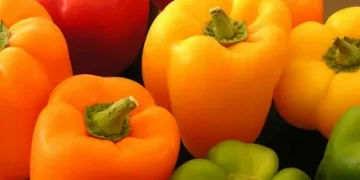How Dutch Peppers First Entered the Japanese Market and the Trends Shaping Today’s Horticultural Landscape
The story of Dutch peppers in Japan offers a fascinating glimpse into the dynamics of international agricultural trade and market development. Frederik Vossenaar of the Ministry of Agriculture, Fisheries, Food Security and Nature recently revisited the historical journey of Dutch peppers to Japan, revealing insights into how this trade relationship began and evolved over the years. This article delves into the origins of Dutch pepper exports to Japan, explores the factors behind their rise and decline, and examines current trends in the Japanese horticultural sector.
The Beginnings of Dutch Pepper Exports to Japan
In 1993, after years of meticulous negotiations and regulatory arrangements, the Netherlands received official permission to export peppers to Japan. Before this milestone, peppers were virtually unknown in Japan, with the local market only familiar with small, bitter peppers. The breakthrough came when the Dutch managed to secure market access by addressing concerns related to the Mediterranean fruit fly through stringent monitoring practices in the Westland region.
To introduce this new vegetable to Japanese consumers, the Dutch government funded cooking demonstrations aimed at educating the market about the uses and benefits of peppers. This initial effort was crucial in generating interest among retailers, though the Dutch supply was limited and not year-round. Consequently, Dutch companies sought additional sources from New Zealand to meet market demands and maintain interest.
The Surge of Korean Pepper Exports
Following the Dutch entry into the Japanese market, South Korean horticulture saw a rapid expansion. The success of Dutch peppers in Japan inspired South Korean growers to pursue similar opportunities. With significant subsidies available for horticultural advancements, Korean greenhouse horticulture experienced a boom. The Dutch expertise in greenhouse technology, including seeds, rock wool, and climate control systems, played a pivotal role in this development. Korean growers eagerly adopted Dutch methods, seeking ways to export their produce to Japan, often featuring “Product from Holland” on their packaging to leverage Dutch branding.
During this period, Frederik Vossenaar, then an agriculture counselor in Seoul, witnessed firsthand the enthusiasm of Korean growers and their dependence on Dutch technology. This era was marked by vibrant growth in the Korean horticultural sector, fueled by a shared ambition to succeed in the Japanese market.
The Decline of Dutch Pepper Exports
In recent years, Dutch pepper exports to Japan have experienced a significant decline. Several factors contributed to this downturn:
- High Air Freight Rates: The cost of air freight, which was a major expense for exporters, became increasingly prohibitive. These costs, combined with fluctuating exchange rates, made Dutch peppers more expensive for Japanese consumers.
- Strict Japanese Regulations: Meeting the rigorous standards set by Japanese authorities became a challenging and less appealing task for Dutch growers.
- Increased Domestic Production: A notable shift occurred as Japan’s domestic production of peppers surged. With substantial advancements in Smart Farming technologies, Japanese farmers have increased local production significantly. Modern practices, including land reforms, the use of drones, and the implementation of 5G infrastructure, have bolstered domestic pepper production. As a result, the market saw a decrease in imports, with domestic peppers from regions such as Miyagi, Ibaraki, and Okayama becoming more prevalent in supermarkets.
Current Trends in Japanese Horticulture
Today, Japanese horticulture is undergoing a period of transformation characterized by technological advancements and new market entrants. The rise of Smart Farming technologies is a key trend, supported by legislative reforms and infrastructural developments aimed at modernizing agriculture. ICT companies, including major players like NTT and Fujitsu, are now exploring opportunities in the agricultural sector, reflecting a broader trend of cross-industry innovation.
However, Japanese agriculture faces challenges, including the aging farmer population and high investment costs for greenhouse technologies. Despite these obstacles, there is considerable potential for growth, with horticulture poised to be a significant theme at the Osaka Expo 2025. Dutch expertise and innovations in greenhouse technology are expected to be showcased as part of this international event.































